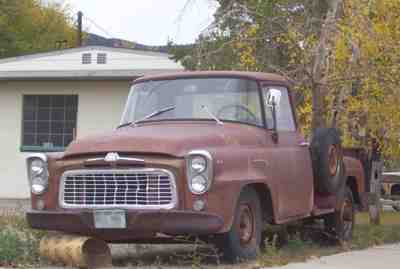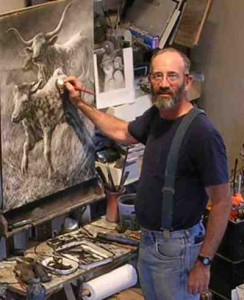Brief by Allen Best
Mountain Life – November 2007 – Colorado Central Magazine
An art show was held over a late-summer weekend in Red Cliff, a one-time mining town located two ridges and sometimes a world apart from Vail.
The town’s artists opened their homes for inspection of photographs from Asia, paintings o

Abandoned pickups and cars were common in Red Cliff just a couple of winters ago. Set up on blocks, they were squeezed in next to houses or behind sheds. At one time, dozens were deposited along the Eagle River.
In most of America, such “dead” pickups are dealt with summarily by homeowner associations and assorted other police of tidiness. This is true, too, in old mountain towns.
But Red Cliff has been an anachronism. Only eight miles away from Interstate 70, that great arterial agent of change, Red Cliff for many years has remained true to its dowdy, blue-collar mining town roots.
Even in flush times, Red Cliff was never a place of wealth as represented by the gaily painted gingerbread Victorians of Aspen, Telluride or even Breckenridge. Red Cliff houses, those that remain from this earlier era, are cluttered carefully on cliff bands and tend toward a plainness that speak to a more hardscrabble existence.
The town is also distinctive for its cramped geography. The slopes of Battle and Hornsilver Mountains squeeze tightly. By comparison, the valley where Aspen is located seems like the Great Plains. Even the old baseball field, which serves double-duty as a snow storage lot during big-snow winters, is on a tilt. If not for the nearby mines, nothing could have justified a town in such a location.
In fact, mining remained a going concern in Red Cliff just a generation ago. Then the Eagle Mine, located two miles away at Gilman, closed and a few years later, in 1981, the Climax Mine between Leadville and Frisco shut down.
Now well into retirement, only a few miners still live in Red Cliff. In the miners’ place has come a new generation of residents, mostly in their 20s and 30s, many with pony tails, and with jobs tied to the resort and construction industries along I-70.
Money is also arriving, and not just from construction jobs. Teetering old buildings are being razed, and new homes and businesses are being erected. It’s like seeing a Salvation Army store, its goods dated and worn, being converted one rack at a time into a store with iPods and fresh Carhartt’s. Both old and new are all the more striking for the contrast between them.
Amid this new gloss of funky modernity the old pickups are disappearing.
“What happened to them?” the artist was asked.
“One by one, they’re all being towed away,” explained the artist.
What will she paint when the rusty old pickups are all gone?
She didn’t say.


